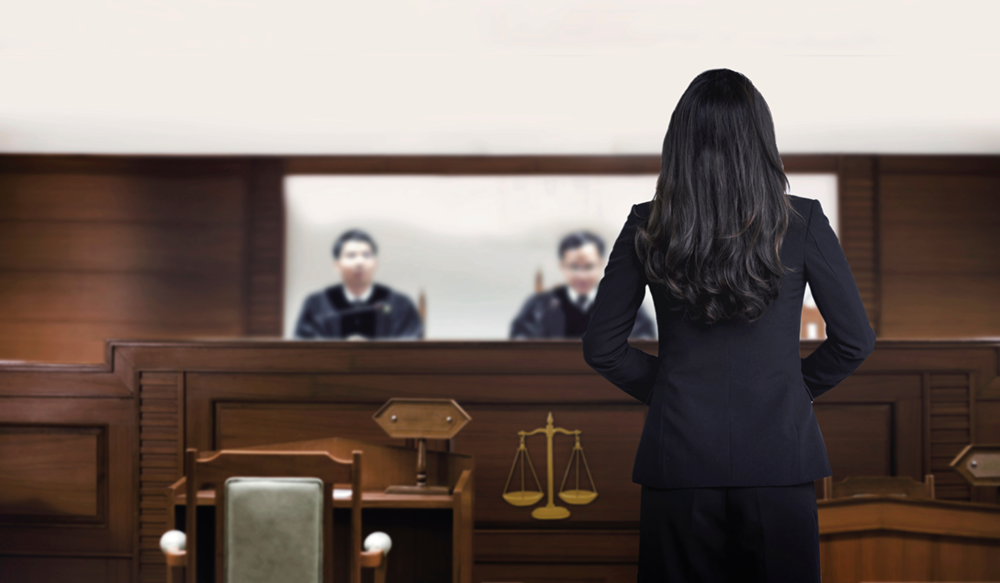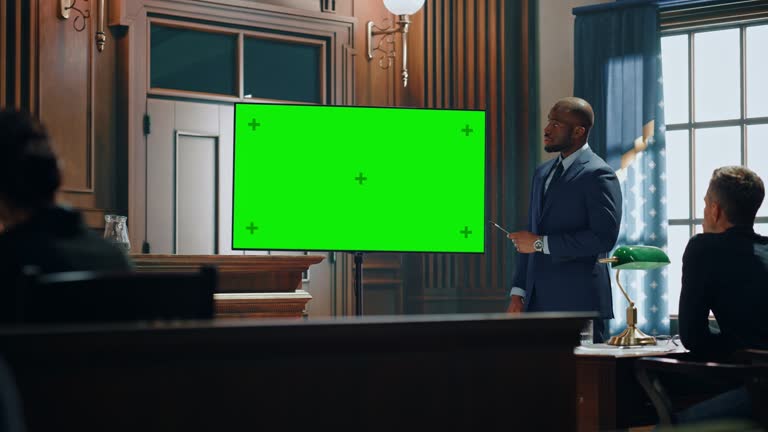From Idea to Courtroom: Steps to Develop Powerful and Persuading Trial Presentations
From Idea to Courtroom: Steps to Develop Powerful and Persuading Trial Presentations
Blog Article
Browsing the Complexities of Trial Presentations: Tips for Seamless Distribution and Compelling Debates
In the realm of lawful process, the art of trial presentation stands as an essential determinant of success. The complexities fundamental in test presentations require a delicate equilibrium of finesse, ability, and technique.

Recognizing Trial Purposes
To properly navigate a test, it is crucial to have a clear understanding of the purposes that require to be accomplished. Before stepping into the court room, lawful teams should specify their objectives and preferred end results. These goals offer as leading concepts throughout the test, forming strategies and affecting decision-making procedures.
Understanding test purposes involves an extensive analysis of the instance, legal criteria, and the client's benefits. Trial Presentations. It calls for a precise evaluation of the realities, determining essential issues, and preparing for prospective obstacles. By setting specific and quantifiable goals, lawyers can customize their presentations and arguments to align with the preferred results
Additionally, a clear grasp of trial purposes allows lawful groups to prioritize proof, witnesses, and legal arguments effectively. It permits the advancement of a coherent narrative that reverberates with the court and court, enhancing the general situation presentation.

Organizing Proof Successfully
Having a clear understanding of trial purposes lays the structure for organizing evidence efficiently in lawful process - Trial Presentations. By straightening the presentation of proof with the preferred results of the test, legal groups can strengthen their disagreements and improve their persuasiveness. One critical facet of arranging proof is categorization. Organizing evidence based on motifs or significance to specific lawful elements can help streamline the presentation and make intricate details more digestible for the judge or jury.
Another crucial element in arranging proof properly is establishing a logical circulation. Offering proof in a meaningful and sequential manner can assist build a compelling story that supports the lawful debates being made. Furthermore, utilizing aesthetic help such as graphes, timelines, or graphs can better boost the company of proof and assist in clearing up complicated partnerships or sequences of occasions.
Moreover, making sure that all evidence offered is pertinent and admissible to the instance is crucial. Unimportant or inadmissible proof can diminish the stamina of the argument and possibly hurt the reliability of the presenting party. A thorough evaluation and choice procedure must be taken on to include only the most lawfully audio and impactful evidence in the test presentation.
Crafting Persuasive Stories
Crafting engaging stories plays a pivotal function in offering influential disagreements during legal process. When constructing a narrative for a trial presentation, it is important to establish a clear story that highlights crucial factors and links them in a coherent way. By weaving together why not try here evidence, testament, and lawful debates right into a cohesive and influential narrative, legal experts can properly promote for their customers and raise the likelihood of a positive end result in the court.
Grasping Visual Aids
Efficient use of aesthetic help is key to boosting the influence and clearness of trial discussions. Aesthetic help, when used strategically, have the power to streamline complicated information, reinforce bottom lines, and leave a long lasting impression on the discretionary. To understand aesthetic help in test discussions, it is essential to guarantee that they are clear, concise, and pertinent to the debates being made.
When incorporating aesthetic help, such as graphes, photos, timelines, or charts, into a trial discussion, it is vital to maintain them aesthetically appealing yet professional. The visuals ought to match the verbal debates, offering a graph of the details being discussed without frustrating the audience with unneeded information.
Moreover, exercising with the aesthetic aids ahead of time is important to make sure a seamless delivery during the test. Familiarizing oneself with the content, transitions, and timings of each aesthetic help can help keep the flow of the presentation and stop technological problems that might emerge.
Providing Impactful Closing Debates
A compelling closing argument functions as the end result of a test presentation, enveloping the core story and persuading the judge and jury towards a positive choice. To provide an impactful closing disagreement, it is vital to succinctly wrap up crucial points, highlight the toughness of your situation, and attend to any kind of weak points in a calculated manner. Begin by describing the main disagreements that support your customer's position, stressing why the evidence offered throughout the trial sustains your narrative. It is necessary to create a sense of cohesion and quality, guiding the discretionary in the direction of the preferred conclusion.
Furthermore, incorporating psychological appeal can even more strengthen your closing argument. Inevitably, a well-crafted closing debate should leave a lasting impression, engaging the court and court to rule in your client's support.
Final Thought
To conclude, mastering trial presentations entails comprehending purposes, organizing proof, crafting narratives, using aesthetic aids, and providing impactful closing debates. By executing these methods properly, lawyers can offer their situation find more information effortlessly and make engaging arguments in the courtroom. It is important to browse the complexities of test presentations with accuracy you can try this out and ability to accomplish success in legal process.
By aligning the discussion of proof with the wanted results of the trial, legal teams can strengthen their arguments and improve their persuasiveness (Trial Presentations). To master visual help in test presentations, it is essential to make certain that they are clear, concise, and relevant to the disagreements being made
A compelling closing debate offers as the conclusion of a test discussion, encapsulating the core story and persuading the court and court towards a desirable choice. Begin by describing the main arguments that support your client's setting, emphasizing why the proof presented throughout the trial sustains your narrative.In verdict, grasping test discussions entails understanding objectives, organizing evidence, crafting stories, making use of visual help, and delivering impactful closing debates.
Report this page